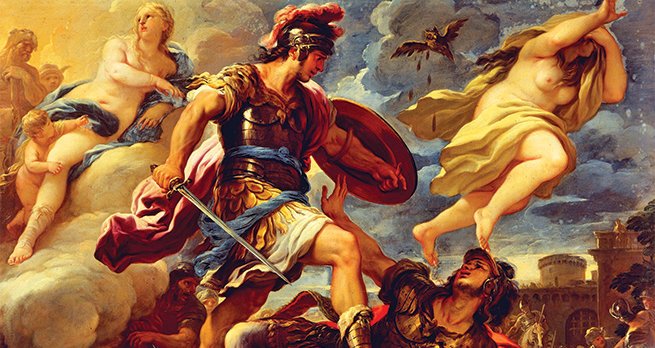3.4 A conflicted hero
You’ve now seen how the behaviour of Aeneas is characterised by two important components of pietas: family and the gods. His pietas is also shown by his concern for the well-being of his followers. His first act when he lands safely in north Africa after surviving the storm in Book 1 is to find high ground to see if he can spot any survivors from the other ships in his fleet; next he goes hunting, making sure that he shoots enough meat for all those with him. He is aware that his followers are in low spirits, and makes efforts to comfort them and to conceal his own anxieties. Thus in many ways Aeneas appears to be the ideal Roman leader: able to take charge yet concerned with the greater good of the group rather than his own personal self-interest. If you have time, you might like to explore this section of the Aeneid further and think about how Aeneas is presented. You can find Book 1 of the Aeneid via the ‘Poetry in Translation [Tip: hold Ctrl and click a link to open it in a new tab. (Hide tip)] ’ website. To read the section we’ve been discussing here, you will need to click on the link ‘Bk1:157–222 Shelter on the Libyan coast’.
Yet despite Aeneas’ inherent pietas, he often falls prey to his own strong emotions and succumbs to furor. During the sack of Troy, despite repeated messages from the gods, he is frequently overcome by battle-lust and desire to take vengeance on the Greeks, and it is not until his goddess mother intervenes that he accepts his destiny to save the survivors of his people and find a new home. Similarly, in north Africa he falls passionately in love with the Carthiginian Queen Dido, and it is the ‘madness’ of love that makes Aeneas temporarily forget his journey and stay in Carthage. Aeneas and Dido’s love affair is described in terms that evoke furor, with imagery of fire and storms. But the greatest clash in the poem between furor and pietas comes at the very end, and we will explore this in the next section.
